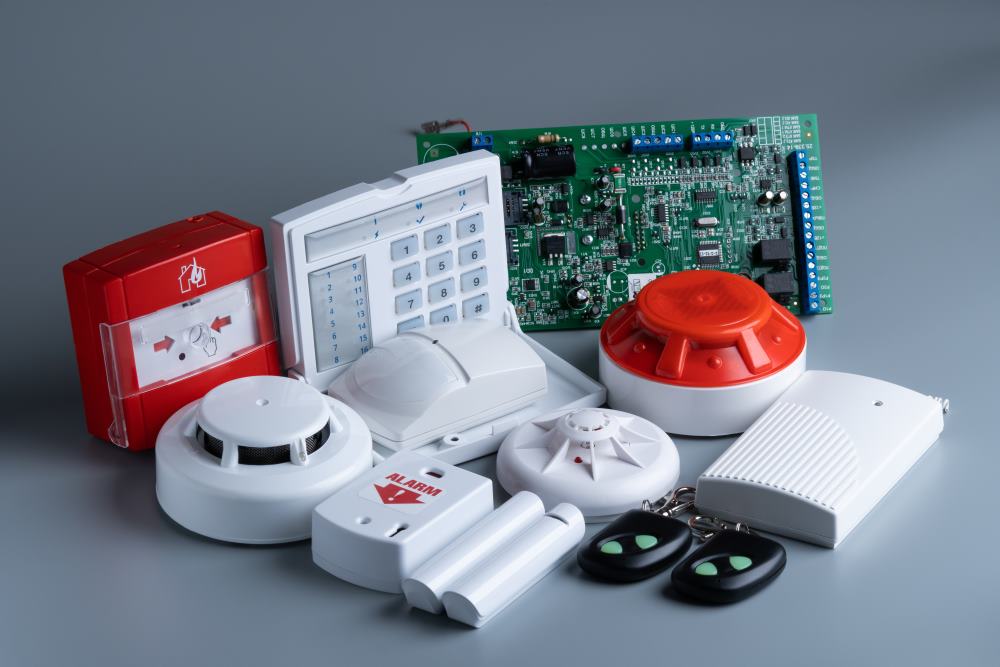Different Types of Fire Detectors and Their Uses

When it comes to protecting lives and property, fire safety is something no one can ignore. One of the most important tools in fire safety is the fire detector. Fire detectors are designed to sense early signs of fire—whether it’s smoke, heat, or flames—and trigger an alarm. This gives people valuable time to evacuate and for fire control systems to act.
There are different types of fire detectors, each built for specific environments and uses. We’ll explore these types in detail, how they work, and where they are best used. Understanding them can help you choose the right fire detection system for your home, office, or industrial facility.
Why Fire Detectors Are Important
Fires can start unexpectedly and spread quickly. A few seconds of delay can make a huge difference. Fire detectors provide early warning and can:
- Save lives by giving occupants time to escape.
- Prevent large-scale damage by alerting authorities quickly.
- Support other fire safety systems like sprinklers.
- Provide peace of mind for businesses, homeowners, and institutions.
Without fire detectors, many fires would go unnoticed until it’s too late.
Main Types of Fire Detectors
There are several types of fire detectors, each using different technology to sense fire. The most common are:
- Smoke Detectors
- Heat Detectors
- Flame Detectors
- Combination Detectors
Let’s go through each type and its uses.
1. Smoke Detectors
Smoke detectors are the most widely used fire detectors. They sense the presence of smoke particles in the air, which is usually the first sign of a fire.
Types of Smoke Detectors:
- Ionization Smoke Detectors
These detect small smoke particles from fast-flaming fires. They are highly sensitive to quick, intense fires but may not respond as well to slow, smoldering fires. - Photoelectric Smoke Detectors
These detect larger smoke particles from smoldering fires. They use a light beam to sense smoke and are less likely to trigger false alarms from cooking or steam. - Dual-Sensor Smoke Detectors
These combine ionization and photoelectric technology for maximum protection, detecting both flaming and smoldering fires effectively.
Best Uses:
- Homes and apartments.
- Offices and schools.
- Hotels and residential buildings.
Smoke detectors are considered essential for any living or working space.
2. Heat Detectors
Unlike smoke detectors, heat detectors sense the rise in temperature caused by fire. They are less sensitive to smoke but highly effective in areas where smoke detectors may give false alarms.
Types of Heat Detectors:
- Fixed Temperature Heat Detectors
These trigger an alarm when the temperature reaches a preset level, usually around 135°F (57°C). - Rate-of-Rise Heat Detectors
These sense a rapid increase in temperature, even if it doesn’t reach the fixed limit. They are useful for detecting fast-spreading fires.
Best Uses:
- Kitchens (to avoid false alarms from cooking smoke).
- Boiler rooms and mechanical rooms.
- Garages, attics, and storage areas.
Heat detectors are not meant to replace smoke detectors but work well in areas where smoke is common.
3. Flame Detectors
Flame detectors are designed to sense the presence of flames directly. They are highly specialized and mostly used in industries where fires can start very quickly and spread rapidly.
Types of Flame Detectors:
- Ultraviolet (UV) Flame Detectors
These sense UV radiation emitted by flames. They respond very quickly but may be affected by false alarms from welding or lightning. - Infrared (IR) Flame Detectors
These sense the heat radiation from flames. They are less affected by false signals and can detect fire from a distance. - UV/IR Flame Detectors
These combine both UV and IR technologies, reducing false alarms and increasing accuracy.
Best Uses:
- Oil and gas industries.
- Chemical plants.
- Aircraft hangars.
- Industrial facilities with flammable materials.
Flame detectors are ideal for hazardous areas where fire can spread in seconds.
4. Combination Detectors
Combination detectors bring together multiple fire detection technologies to provide maximum safety. They can include smoke and heat sensors, or flame and gas detection together.
Best Uses:
- Large commercial buildings.
- Hospitals and laboratories.
- High-risk industrial zones.
These detectors reduce the chances of false alarms and offer reliable performance in complex environments.
Choosing the Right Fire Detector
Now that we’ve covered the types of fire detectors, the next question is: how do you choose the right one? The answer depends on the environment and level of risk.
- Homes and Offices: Smoke detectors (preferably dual-sensor).
- Kitchens and Workshops: Heat detectors to avoid false smoke alarms.
- Industrial Plants: Flame detectors or combination detectors.
- Hospitals and Data Centers: Combination detectors for accuracy and reliability.
It’s also recommended to consult with fire safety professionals who can design a system based on your specific needs.
Installation and Maintenance of Fire Detectors
Even the best fire detectors are only effective if installed and maintained properly.
Installation Tips:
- Install smoke detectors on ceilings, since smoke rises.
- Place detectors in every bedroom, hallway, and living area at home.
- In offices, install detectors in corridors, meeting rooms, and storage areas.
- Keep detectors away from windows, fans, or vents that may affect detection.
Maintenance Tips:
- Test detectors monthly to ensure they are working.
- Replace batteries at least once a year.
- Clean detectors regularly to avoid dust build-up.
- Replace smoke detectors every 8–10 years.
Regular inspection ensures that your fire detection system is reliable when it’s needed most.
Advantages of Using Fire Detectors
Fire detectors provide several key benefits, such as:
- Early Warning: Quick detection saves lives and property.
- Cost Savings: Preventing large-scale damage reduces repair and replacement costs.
- Compliance: Many local fire safety laws require detectors in homes and businesses.
- Peace of Mind: Knowing you are protected brings comfort.
These benefits highlight why fire detectors are essential for every property.
Common Mistakes to Avoid
While installing fire detectors, many people make mistakes that reduce their effectiveness. Some common errors include:
- Not installing enough detectors in a building.
- Placing them too close to kitchens or bathrooms causes false alarms.
- Ignoring regular maintenance.
- Assuming heat detectors can replace smoke detectors in living areas.
Avoiding these mistakes ensures that your fire detection system works properly when needed.
Final Thoughts
Fire safety is a responsibility that should never be overlooked. With so many types of fire detectors available, it’s important to understand their functions and uses. Smoke detectors are best for homes and offices, heat detectors for kitchens and mechanical areas, flame detectors for industries, and combination detectors for complex environments.
Installing the right fire detector—and maintaining it—can save lives, protect property, and prevent financial losses. Whether you’re securing your home, office, or industrial site, fire detectors are your first line of defense against fire hazards.
